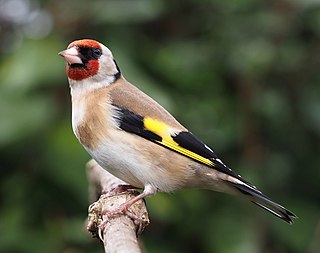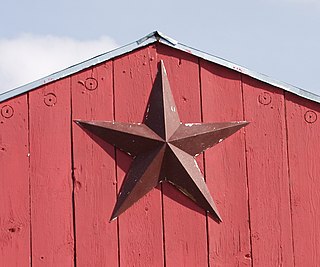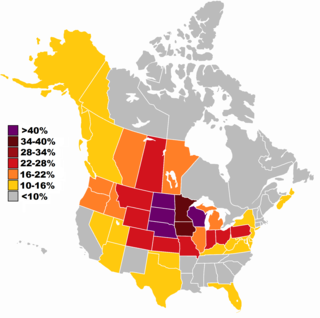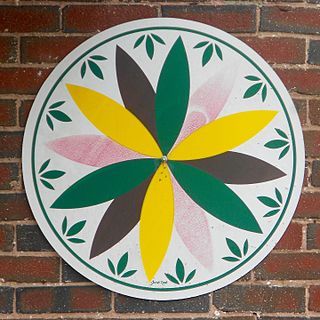
The United States does not have an official language at the federal level, but the most commonly used language is English, which is the de facto national language. It is also the only language spoken at home by the great majority of the U.S. population. Many other languages are also spoken at home, especially Spanish, according to the American Community Survey (ACS) of the U.S. Census Bureau; these include indigenous languages and languages brought to the U.S. by people from Europe, Africa, and Asia. However, the majority of speakers of these languages are bilingual and also speak English. Although 21.5% of U.S. residents report that they speak a language other than English at home, only 8.2% speak English less than "very well." Several other languages, notably creoles and sign languages, have developed in the United States. Approximately 430 languages are spoken or signed by the population, of which 177 are indigenous to the area. At least fifty-two languages formerly spoken in the country's territory are now extinct.

The Pennsylvania Dutch, also known as Pennsylvania Germans, are a cultural group formed by German immigrants who settled in the Commonwealth of Pennsylvania during the 18th and 19th centuries. They emigrated primarily from German-speaking territories of Europe, now partly within modern-day Germany, but also from the Netherlands, Switzerland and France's Alsace-Lorraine Region, traveling down the Rhine river to seaports.
Powwow, also called Brauche or Braucherei in Deitsch, is a vernacular system of North American traditional medicine and folk magic originating in the culture of the Pennsylvania Dutch. Blending aspects of folk religion with healing charms, "powwowing" includes a wide range of healing rituals used primarily for treating ailments in humans and livestock, as well as securing physical and spiritual protection, and good luck in everyday affairs. Although the word "powwow" is Native American, these ritual traditions are of European origin and were brought to colonial Pennsylvania in the transatlantic migrations of German-speaking people from Central Europe in the seventeenth and eighteenth centuries. A practitioner is sometimes referred to as a "Powwower" or Braucher, but terminology varies by region. These folk traditions continue to the present day in both rural and urban settings, and have spread across North America.
Goldfinch or The Goldfinch may refer to:

The European goldfinch or simply the goldfinch is a small passerine bird in the finch family that is native to Europe, North Africa and western and central Asia. It has been introduced to other areas, including Australia, New Zealand and Uruguay.

A barnstar is a painted object or image, often in the shape of a five-pointed star but occasionally in a circular "wagon wheel" style, used to decorate a barn in some parts of the United States. They have no structural purpose but may be considered lucky, akin to a horseshoe mounted over a doorway. They are especially common in Pennsylvania and frequently seen in German-American farming communities. They are also found in Canada, particularly in the province of Ontario.
Silver RavenWolf, born Jenine E. Trayer, is a best-selling American New Age, Magick and Witchcraft author and lecturer who focuses on Wicca.

German Canadians are Canadian citizens of German ancestry or Germans who emigrated to and reside in Canada. According to the 2016 census, there are 3,322,405 Canadians with full or partial German ancestry. Some immigrants came from what is today Germany, while larger numbers came from German settlements in Eastern Europe and Imperial Russia; others came from parts of the German Confederation, Austria-Hungary and Switzerland.

Pennsylvania Dutch Country, also called Pennyslvania Dutchland, or simply Dutchland, also sometimes referred to as the Distelfink Country, is an area of Southeastern and South Central Pennsylvania that by the American Revolution had a high percentage of Pennsylvania Dutch inhabitants. Religiously, there was a large portion of Lutherans. There were also German Reformed, Moravian, Amish, Mennonite, Schwarzenau Brethren, and other German Christian sections. Catholics settled around early Jesuit missions in Conewago and Goshenhoppen. The term was used in the middle of the 20th century as a description of a region with a distinctive Pennsylvania Dutch culture, but in recent decades the composition of the population is changing and the phrase is used more now in a tourism context than any other.

Fraktur is a highly artistic and elaborate illuminated folk art created by the Pennsylvania Dutch, named after the Fraktur script associated with it. Most Fraktur were created between 1740 and 1860.

The lesser goldfinch is a very small songbird of the Americas. Together with its relatives the American goldfinch and Lawrence's goldfinch, it forms the American goldfinches clade in the genus Spinussensu stricto.

The term Fancy Dutch or Gay Dutch refers to the Pennsylvania Dutchmen who do not belong to the Anabaptist churches. Unlike the Amish, the conservative Dunkards, or Old Order Mennonites, they do not wear plain clothing, nor do they refuse to fight in wars. Many popularly associated characteristics of Pennsylvania Dutch culture, including spielwerk, hex signs, and other aspects of Pennsylvania Dutch art, music, and folklore, are derived from the Fancy Dutch. The tourism industry and mainstream media often erroneously attribute such contributions to the more conservative Plain Dutch, though they would reject these aspects of their more worldly Fancy counterparts.

Hex signs are a form of Pennsylvania Dutch folk art, related to fraktur, found in the Fancy Dutch tradition in Pennsylvania Dutch Country. Barn paintings, usually in the form of "stars in circles", began to appear on the landscape in the early 19th century and became widespread decades later when commercial ready-mixed paint became readily available. By the 1950s commercialized hex signs, aimed at the tourist market, became popular and these often include stars, compass roses, stylized birds known as distelfinks, hearts, tulips, or a tree of life. Two schools of thought exist on the meaning of hex signs. One school ascribes a talismanic nature to the signs; the other sees them as purely decorative. Both schools recognize that there are sometimes superstitions associated with certain hex sign themes and neither ascribes strong magical power to them. The Amish do not use hex signs.

In art and iconography, a motif is an element of an image. The term can be used both of figurative and narrative art, and ornament and geometrical art. A motif may be repeated in a pattern or design, often many times, or may just occur once in a work.

Elektor, also known as Elektor Magazine, is a monthly magazine about all aspects of electronics, originally published in the Netherlands as Elektronica Wereld in 1961 and latterly Elektuur in 1964, and now published worldwide in many languages including English, German, Dutch, French, Greek, Spanish, Swedish, Portuguese and Italian with distribution in over 50 countries. The English language edition of Elektor was launched in 1975 and is read worldwide.
"The Sign of the Triple Distelfink" is a Donald Duck comic story by Don Rosa. It serves primarily to establish the origin of Gladstone Gander's extraordinary luck.

The Goldfinch is a painting by the Dutch Golden Age artist Carel Fabritius of a life-sized chained goldfinch. Signed and dated 1654, it is now in the collection of the Mauritshuis in The Hague, Netherlands. The work is a trompe-l'œil oil on panel measuring 33.5 by 22.8 centimetres that was once part of a larger structure, perhaps a window jamb or a protective cover. It is possible that the painting was in its creator's workshop in Delft at the time of the gunpowder explosion that killed him and destroyed much of the city.
A sawbuck table or X-frame table is a type of trestle table having X-shaped supports at either end. It takes its name from the similarity of these X-shaped supports to sawbucks. In addition to the supports, a sawbuck table is distinguished by a sturdy central rail and key-tenon joints holding the supports and central rail together. Historically, sawbuck tables also often featured footrests running the length of the table.
Don Yoder was an American folklorist specializing in the study of Pennsylvania Dutch, Quaker, and Amish and other Anabaptist folklife in Pennsylvania who wrote at least 15 books on these subjects.














